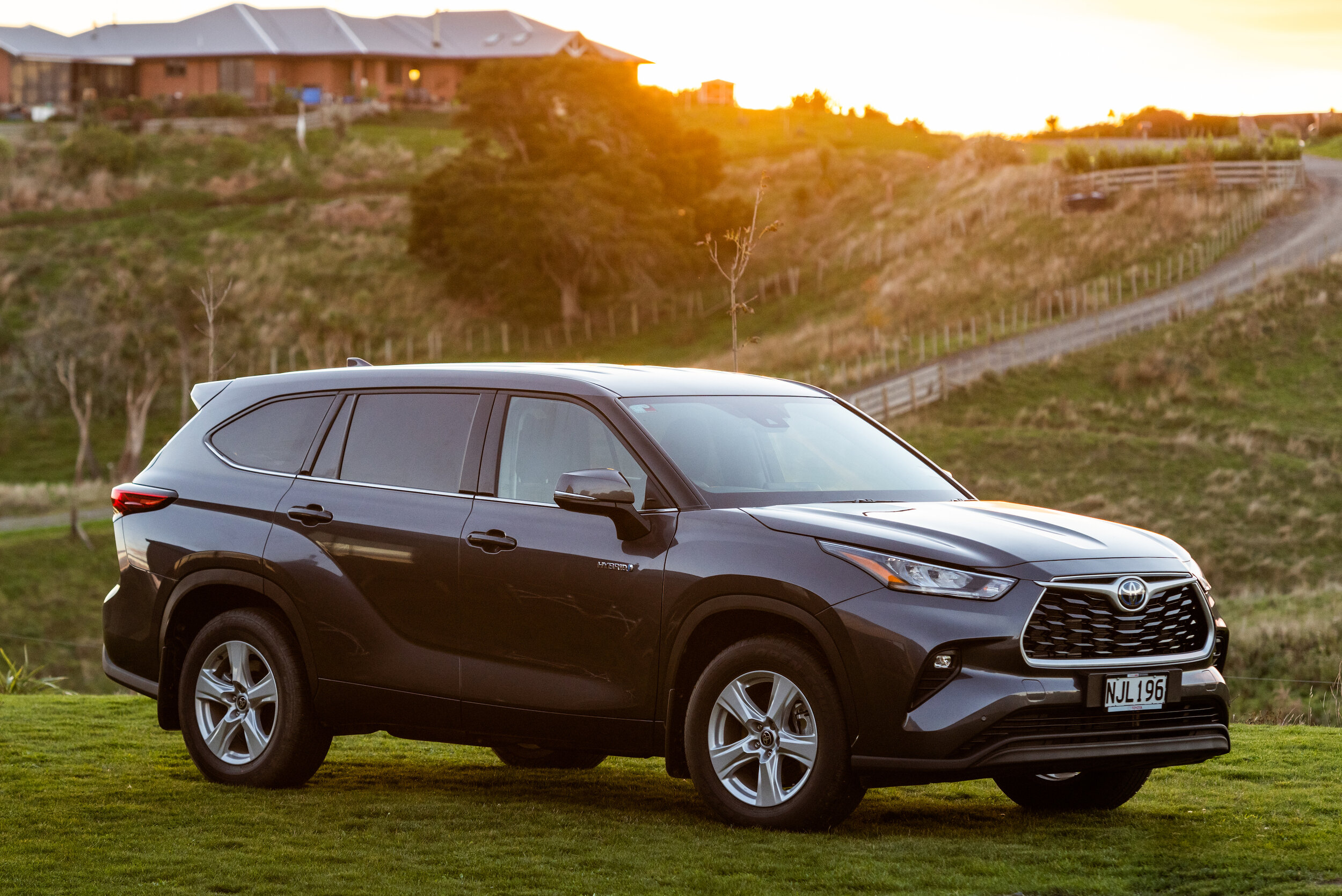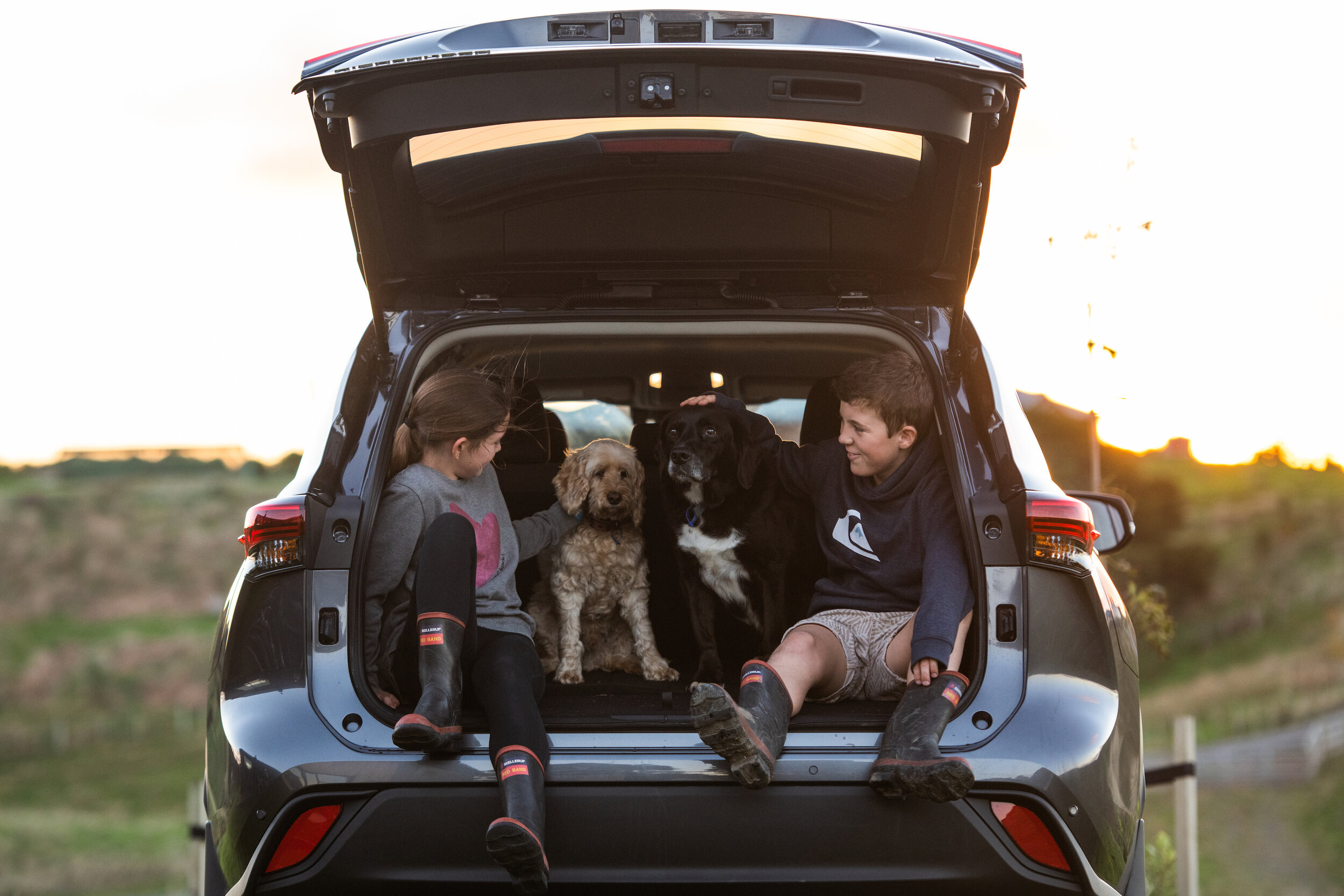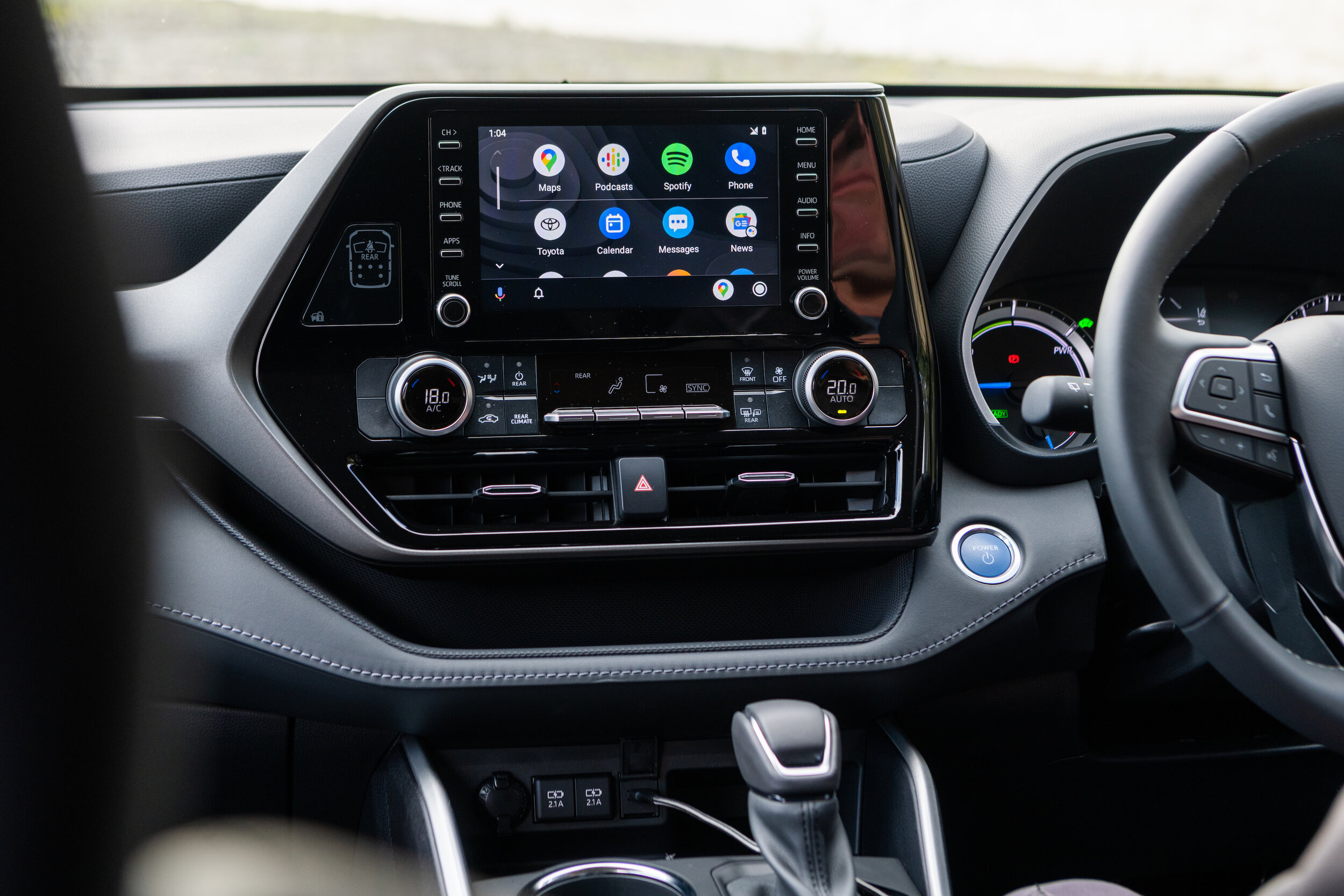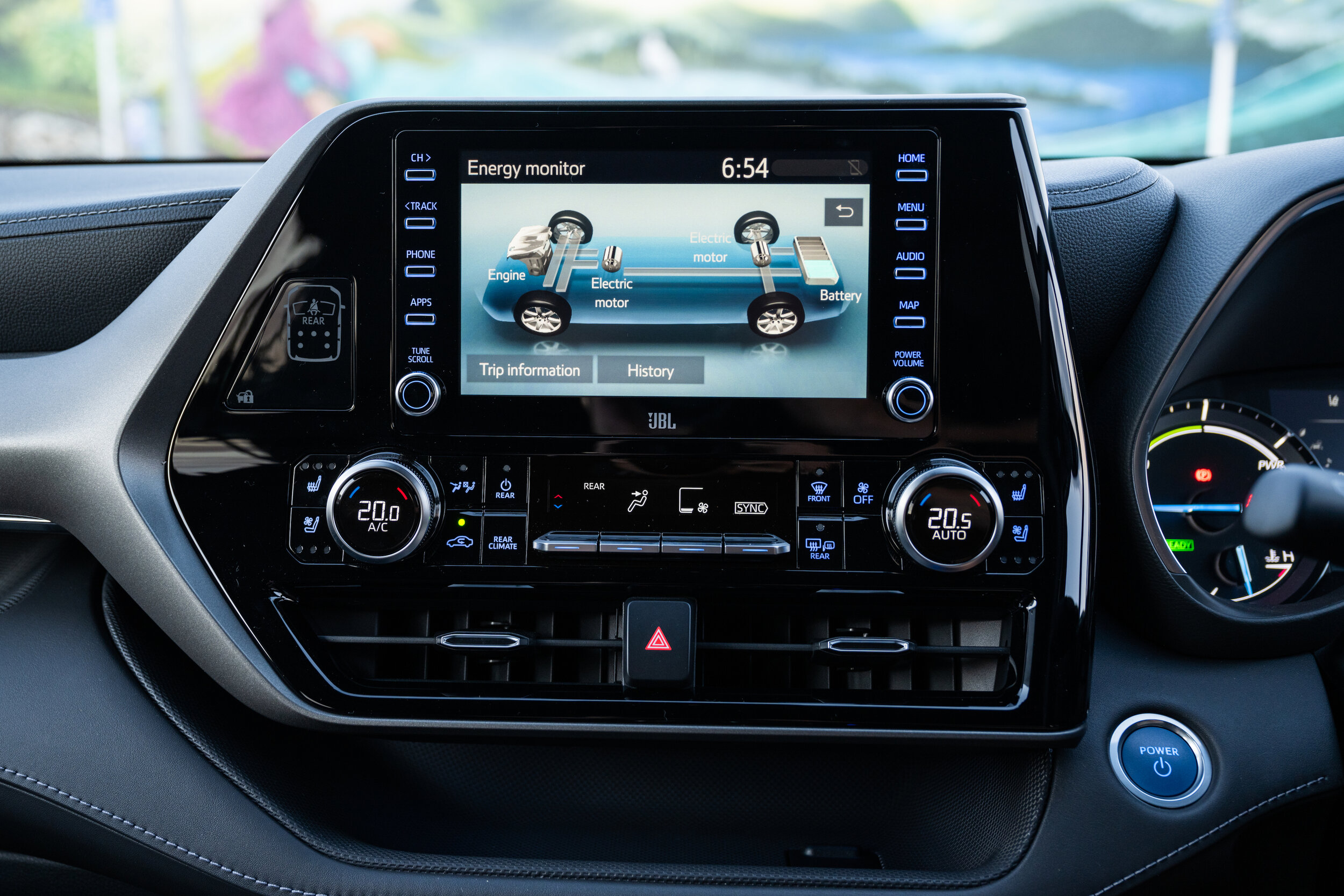Toyota Highlander first drive review: From drinking chump to sipping champ
/The new hybrid doesn’t quite have the V6’s oomph, but you can’t help but be impressed by the other-worldly efficiency.
ANY one out to set an economy record would surely steer clear of the route from the stopping point to view our largest known living kauri tree through to Whangarei.
Only the last third part of the run starting at the Tane Mahuta stop-off, in Waipoua Forest, offers the flat and easy-going condition that could be considered properly conducive to driving for optimal thrift.
The remainder is twisty, so asks for plenty of throttle work and speed re-adjustment.
And, yet, it was here where the hybrid version of the latest Toyota Highlander, without any particular effort from this driver, went into fuel-eking overdrive.
Having already demonstrated impressive thrift through the entirety of a two-day trip starting out in Auckland and reaching into Northland as far as our overnight stop, Paihia, it really leaned out on that last stint, right down to 5.7 litres per 100km. Not for long - by journey’s end, was settled at 6.0 litres per 100km. - yet just seeing it within 0.1 litres/100km of the car’s cited optimal was hugely impressive.
This A-plus effort will surely sound sweet to the early bird buyers who’ve gone for a powertrain also used by the RAV4 petrol-electric, but with a higher combined output here – up to 184kW against 163kW.
Comparing the new choice against the latest V6 that also serves this model made for an interesting experience. The six has markedly more stomp, sounds sweeter when pushed, attracts for all-round smoothness and is married to a more amenable transmission. Yet, in the drinking stakes, it’s still sobering.
Even though mechanical improvements are said to have taken the edge off that thirst, proved on this endeavour to be the one well ahead in its potential to earn service station loyalty awards; always hitting averages well above the cited best-achievable of 8.8L/100kms. Sometimes more than doubling the petrol electric’s best-seen consumption.
Of course, just having two adults aboard was not necessarily a totally accurate of everyday usage. There’s good reason this car formats, in all trim levels, as a seven-seater. Three row SUVs are the modern equivalent of the old station wagon; proper family usage would means more seats filled, potentially the boot too, and probably – despite the load area being decent-sized – with a roof pod as well. With a lot more weight to haul in those circumstances, it’s possible the hybrid would have to exert harder than the six-cylinder. Even so, there’s good chance it’d still produce far superior returns.
Little wonder Toyota New Zealand has determined the four-cylinder horse is the winning bet in the long run. What surprises, really, is that they have still bothered with the V6.
That wasn’t the original call. This time last year, the bigwigs decided they only needed petrol electric and could safely retire the big six. However, having relayed that news publicly, they began to get feedback from the corporate sector that suggested the V6 was still desired. So they u-turned.
Now they must wonder why they didn’t just stay the course. First, because 85 percent of pre-sale orders have gone to the hybrid. Also, the corporates haven’t made good on that talk. The majority of early bird sign-ups, accounting already for more than 800 of the 1200 Highlanders that have been promised to NZ this year, are private owners.
Another reason for the V6 badge likely to be a reasonably rare sight even when the model officially hits the road on July 1 is that TNZ has whittled the big six down to two trim levels, one less than the hybrid. Common to both are base GLX and next-step, more affluent Limited; in the petrol-electric line, that trim is topped by a really ritzier Limited ZR.
As mentioned previously, the V6 might maintain relevance through it being the more budget choice on the pricing schedule. Two factors wrigh in on this. First, and quite remarkably, in this new line, the six-cylinder is up to $10,000 cheaper than its equivalent in the old. Plus you have to account for the hybrid’s extra tech wizardry and lithium ion battery obviously having a cost impact.
Anyway, you now spend as much for a V6 Limited ($63,990) as is asked for a base hybrid. That car, in turn, carries a $3000 premium over the like-trimmed GLX V6; the cheapest Highlander here for quite a while. The Limited petrol-electric is $66,990 and the Limited ZR tops the range at $74,990.
The driving experience is the best way which clan the different types belong to. Were the badges covered and bonnets sealed shut, the types in common trim are much of a muchness. Same body styling, common kit-outs, same environment that seems so classy you wonder how Lexus could make it better (of course, they will in time, with a new RX).
And same driving feel? Hmmm. Yes and no. The chassis set-up and spring ratings for both types is common and the hybrid is but 30kg heavier than the petrol. Yet, on our initial run, common sentiment was that the pure petrol felt firmer and sportier, the hybrid more compliant yet also better-balanced.
Highlander reaches us purely in all-wheel-drive format, but whereas the petrol continues with a mechanical set-up the hybrid uses its fuel-reliant powerplant to drive the front wheels and relies on an electric motor, feeding off a battery under the back seat, to run the rears.
Either approach tunes to an ‘as and when required’ format, with power prioritising to the front wheel set when it’s not required for both. The mechanical system’s reactivity is slightly faster; taking tightening corners with enthusiasm in the hybrid had it entering with trademark front-drive push before gathering its wits to exit with all-paw activation.
Whether Toyota intends you drive it with so much brio is questionable. Highlander has good steering feel and for a car of its height doesn't exhibit too much body roll. The ride is really very good: supple and quiet in its reactions to bumps.
Yet the damping is a touch floaty and overall it continues to be a cushy driving champion, tailored thus on assumption most shoppers probably aren't looking for handling performance. And, of course, also influencing is that it comes out of America, with Australia and New Zealand not only being the only two right-hand-drive markets but also the only destination countries on this side of the Pacific.
Anyway, those who insist on pushing it to the limits will find the V6 the keener candidate (moreso than the hybrid, whose oscillations of revs and pitch dissuade a fully heavy foot), but less so the vehicle proper. Some drivers might enjoy the challenge, but surely few passengers.
As with other Toyota hybrids, the Highlander version has an electric drive mode that is limited in capability. The range is short and beyond 30kmh the engine kicks in with a bit of a thump.
The four-pot’s lean ways are explained by it bypassing a turbocharger and using Atkinson cycle valve timing. It’s the usual infinitesimally variable epicyclic power-split motor/generator transmission too. All those components have been worked over to lose weight and friction, and the rear motor is strong enough to produce the majority of the car’s torque at low speeds.
Clever? Not half. BTW, if you think hybrids can’t do towing, note this one equals the V6 with ability to haul a 2000kg braked trailer.
It would have been fun to take it off-road; not seriously, of course; but even a gravel road or a firm beach – just somewhere to discover if it emulates the RAV4, whose subtle traction control of the electric drive motors helps find surprising grip. This, the reasonable ground clearance and the suspension’s suppleness bode well for gravel driving.
So what’s the best spec? The entry provision is impressive, with LED lights, rain-sensing wipers, an 8-inch infotainment touchscreen display, voice recognition, rear privacy glass, a reversing camera, blind spot monitoring and Toyota’s Safety Sense system that brings – deep breath - a pre-collision system with autonomous emergency braking, emergency steer assist, lane departure warning, lane centring, automatic high beams, road sign recognition, vehicle, pedestrian and cyclist detection, intersection turn assist and active cruise control with automatic curve speed reduction.
The Limited trim seemed a better choice, though. Not because it divests cloth trim for synthethic leather – a drawback, as the base seats are just nicer to sit on – but because it furnishes the things you imagine a GXL buyer will secretly hanker for. You know; a power tailgate, heated and power-adjustable front seats, three zone climate control, a seven-inch multi-information display, satellite navigation and silver roof rails.
Where does that leave the Limited ZR Hybrid, then? Aside from sitting prettiest of all by divesting the lesser variant’s 18-inch rims for 20-inchers that better conform to the rig’s overall shape and substance and also being the sole model with a head-up display and properly hands-free (so wag your foot) tailgate operation,, it’s really delivering furnishings that are less ‘must’ than ‘like to’ have: A panoramic view monitor, a cool air blower function in those front seats, rear door sunshades, an auto-dimming rearview mirror, woodgrain interior trim, a panoramic sunroof, chrome exterior trim, projector LED headlights and an 11-speaker JBL sound system.
There are other competitors in this category that are more fun to drive, no argument. All the same, what undoubtedly blemished the Highlander’s reputation in the past was that it was a rental fleet special and that it solely ran a thirsty V6. Both those issues are sorted – Toyota has weaned itself off big fleet deals to hire companies and, in any event, there are precious few tourists to drive them.
Now it can get back to focussing on the job it was built to take on: Fulfilling as a highly functional, roomy and well-specced family wagon. In that role, and in hybrid format, it is set to rise.
The V6’s 218kW and 350Nm is beguiling, but unless you’re on a company fuel card, it’s surely set to be a financial burden.
Sure, the hybrid takes a back seat on step-off and overall oomph, but unless you’re running five minutes behind in the school run GP would you ever notice? In general driving, the margin is really not that obvious; while the four-cylinder itself cracks out 142kW, the added assistance from the electric side lifts the total combined output to 184kW and generates 242Nm torque.
Much lower running costs, a big reduction in emissions also put the hybrid in a good light. It gives Highlander a fresh start and really takes some beating.






















